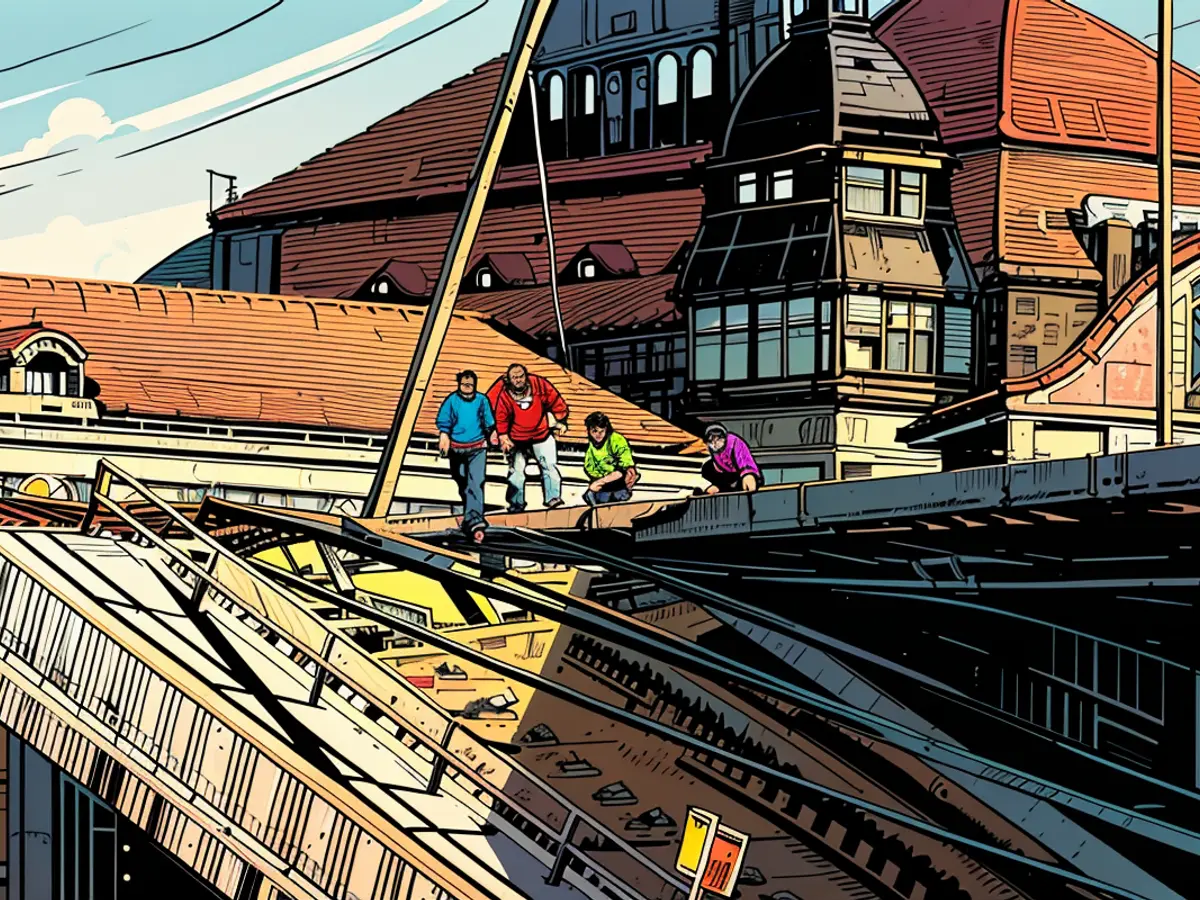- Dresden skirts calamity as a bridge crumbles to pieces.
Dresden narrowly dodged a major catastrophe with the partial collapse of the Carolabridge. Around a 100-meter stretch, which included tram tracks, a pedestrian path, and a bike lane, plummeted into the Elbe in the middle of the night. Another section remains at risk of collapse. Thankfully, no casualties were reported. The authorities suspect no foul play and are treating it as an accident.
Dresden's bridge safety administrator, Holger Kalbe, appeared before the media the following morning, visibly shaken. "Let me tell you, this isn't a morning you'd ever want to wake up to," said the head of the bridge and engineering structures department in Dresden.
Mere minutes before the last tram crossed
The Carolabridge in Dresden is one of the city's major traffic arteries, stretching across the Elbe in the city center. The potential consequences of the collapse could've been much more severe: Just 18 minutes prior to the partial collapse, the last tram traversed the bridge. The tram crossed at 2:50 AM, and the bridge crumbled at 3:08 AM, according to the transportation company.**
The earth shook
The initial reports of the bridge collapse reached the police in the dead of night, courtesy of their own colleagues conducting security measures 50 meters away at the Jewish synagogue. "We received our first report around 3:00 AM. It was our own team on site who reported a loud, heavy noise. The ground shook," said police spokesman Thomas Geithner.**
Corrosion as the likely culprit?
The Carolabridge, constructed in 1971, consists of three sections (parts A, B, and C). Sections A and B underwent renovations in recent years, but C (due for renovation in the next year) gave way. "This is a risk we've been grappling with for years," said department head Kalbe. "The current condition of section C wasn't something we could suspect would lead to a collapse."**
Investigations into the precise cause of the incident are ongoing, but Holger Kalbe raised a suspicion: Corrosion could be the culprit - a consequence of inadequate maintenance in the past. "We saw massive chloride ingress here during the GDR era," said Kalbe. It's plausible "that there was massive chloride ingress at that point and caused corrosion of the reinforcement inside the bridge."
District heating supply completely failed
According to the fire department, a one-meter-wide gap appeared at the bridge's old town side. When the incident commander Michael Klahre assessed the scene, a sudden loud blast echoed, he reported. Two district heating lines ruptured. The escaping water flooded parts of the terrace bank. Initially, district heating was entirely cut off for the city. The responsible energy provider gradually reconnected the various districts to the network.**
The collapse site was cordoned off on a vast scale.
Police established a large-scale perimeter around the collapse site. Traffic and trams were diverted. The public was advised to stay away. Despite this, hundreds of onlookers gathered along the Elbe to witness the fallen bridge. The remaining bridge sections are currently inaccessible. There will be no immediate reopening of the other two bridge spans, said Kalbe. The fallen bridge section was once connected to the others, and damage was sustained there as well. The entire structure now requires inspection.**
Current Traffic Trial on the Bridge
The fallen bridge span of the Carol Bridge in Dresden was slated for renovation the following year. Additionally, a traffic trial was planned on the bridge until the end of the year, aiming to enhance safety for cyclists and pedestrians. The trial and the project were subjects of heated debate. The Dresden AfD accused a misplaced focus in traffic policy, asserting that the financing for the traffic trial should've been channeled into static safety measures instead.**
Police: No Basis for Legal Proceedings
At present, the police consider the partial collapse an accident. "We detect no signs of any criminal activity. No investigations are ongoing," said police spokesman Geithner. The focus is now on determining the exact cause. If it's uncovered that errors were committed, then a criminal investigation would be initiated, said Geithner. "But we don't have those indications presently."
The responding police officers worked diligently to maintain order and safety around the collapsed bridge site, ensuring that the area was secure and that onlookers were kept at a safe distance. Due to the extensive damage, the police also played a crucial role in managing traffic diversions and ensuring smooth transportation flow in and around the city.






